Sold for $1,760,000.
by Mike –
The one-of-a-kind Iso Grifo Prototype does not come up for sale often but here it is up for auction.
This is the first Iso Grifo and the design style represents what Giorgetto Giugiaro of Bertone had in mind. The production Iso Grifo GL has some differences as I discuss at the end of this post.
I once asked Piero Rivolta why the series 1 Iso Grifo did not have the beautiful hood scoop that Giugiaro used on the prototype and he replied in his Italian way with a shrug – “the hood scoop was too expensive”.
Here is that elegant Giugiaro hood scoop for sale along with the whole Iso Grifo No. 001.
1963 Iso Grifo A3/L Prototype
Up for auction by Gooding & Company in Scottsdale, Arizona, January 19 & 20, 2018.
Gooding writes,
Estimate: $1,100,000 – $1,500,000
Chassis: 420001
PROVENANCE
Ron Kellogg**, Whittier, California (acquired by the mid-1970s)
John Ling, Milwaukee, Wisconsin (acquired by the early 1980s)
Dr. Frederick Reeser, Milwaukee, Wisconsin (acquired from the above in the mid-1990s)
Scott Grundfor, Arroyo Grande, California (acquired from the above by the late 1990s)
Private Collection, New York (acquired from the above circa 1997)
Current Owner (acquired from the above)
Iso Grifo – A Brief History On Its 50th Anniversary
This section was originally written by me for the Concorso Italiano Program – August 15, 2015. Read all of it at this link.
The pinnacle of the Iso GT car is the beautiful Grifo. More and more car lovers have recognized the Iso Grifo in recent years as a great GT that compares very favorably to period GTs from Ferrari, Maserati, Lamborghini and all other GT manufacturers. This helps explain a dramatic increase in the value of the Iso Grifo over the last few years, which has kept pace with, or exceeded, the market appreciation for collectable cars.
The Iso Grifo A3/L, as the one-off prototype was named, debuted at the Turin Auto Show in 1963 along with a similarly named Iso Grifo A3/C, which had a lightweight riveted aluminum alloy body. The ‘L’ in A3/L stands for lusso (luxury) and the ‘C’ in A3/C stands for corsa (race). For such a small difference in the name there was a huge difference in the appearance and purpose of the two cars. The A3/L is a full luxury sport GT car for two. The A3/C is a racecar designed for the sole purpose of winning the 24 Hours of Le Mans where it did win the 5-Liter and above class, finishing 9th overall in 1965.
The combination of the vision of Renzo Rivolta, the engineering expertise of several key Iso employees like Pierluigi Raggi, the technical contributions of Giotto Bizzarrini (the engineer in charge of the development of the Ferrari 250 GTO) and the brilliant styling of Giorgetto Giugiaro of Bertone resulted in one of the most admired sports cars of the past fifty years. Nuccio Bertone also played a critical role in the creation of the Iso Grifo.
There was confusion at Iso about what to do next after the Rivolta GT (the 2+2 family car). Bizzarrini was pushing for a two-seat sports car and he really wanted to build a racecar. Renzo Rivolta, as a businessman, was concerned about the financial wisdom of building a sports GT car that only held two people. He was also concerned about the development cost.
The Iso Grifo Prototype, driven by Dave Dolter at Concorso Italiano, 2015 (Piero Rivolta is in the red vest and Keith Martin, the MC, has his back to the camera) – photo by Dave Tomaro of Sports Car Market Magazine
Nuccio Bertone was so committed to the idea (of a berlinetta) for the next Iso GT that he offered to do the work. Renzo Rivolta saw the wisdom in this suggestion and thus Nuccio Bertone was key in making the Grifo a reality. Bertone even came up with the Grifo name.
The Grifo was built using a shortened Rivolta GT chassis (which was designed by Pierluigi Raggi and Giotto Bizzarrini) with Nuccio Bertone taking the responsibility to build the prototype based on a rolling chassis and mechanical components sent to Bertone by Iso. Bertone built the Grifo A3/L and the one-of-a-kind prototype was displayed on the Bertone stand at the 1963 Turin Auto Show. This was a huge attraction for Bertone, exactly what Nuccio Bertone had in mind.
**When I visited my friend, Ron Kellogg, a few years ago he handed me a folder labeled “Iso Grifo” with black and white photos of the Iso Grifo A3/L Prototype that he had shot in the mid-1970s. The color photos in this section were taken by David Grant also in the 1970s. Read the whole story at this link.
Prototype And Production – A Few Differences For The Iso Grifo
Having formerly owned two series 1 Iso Grifos I am a big fan of the style and functionality. In this post I provide a visual difference between the A3/L Prototype and the series 1 production Grifo. Read the rest at this link.
There are a few design differences between the Iso Grifo A3/L prototype and the production Iso Grifo GL, which is to be expected.
Prototypes are designed to look great and to impress all who see them at the car shows when a new model is being introduced as well as to help work out the bugs for the production version.
The Iso Grifo A3/L certainly did it’s job when it was introduced in 1963 – it made a big splash both for Iso and for Bertone. It was widely praised on the new car show circuit. However, when it was time to go into production Iso decided to make a few changes, some to save money and some to make the car better.
Here you can see some of the differences between the one and only dark silver Iso Grifo A3/L (No. 001) and the blue Iso Grifo GL (No. 101), which is my Grifo. There were 100 Grifos made between these two beauties and a grand total of 402 Grifos were made not including the Grifo A3/C models.
There were some design changes implemented over the years most notably the front end change to what is called the series two covered headlight style. There are some variations of the engine, from the Corvette 327 cid, Corvette 427 cid (7-Liter), a few with the Corvette 454 cid and finally the Ford 351 Cleveland engine.
The unique hood scoop and the louvers on the prototype are quite different than the production hood with the small, elegant bulge.
The beautiful door handle on the A3/L looks very similar to the series one door handle on the Bizzarrini GT 5300. The button on the production Iso Grifo looks similar to the series two Bizzarrini GT 5300 door button.
There are many differences in the front end style as you can see from these photos. You can also see from the painting below that Giugiaro changed his mind on some features between the time this painting was made and when the A3/L was made. Look closely at the hood.
Good luck to the seller and the new owner.
Let us know what you think in the Comments.

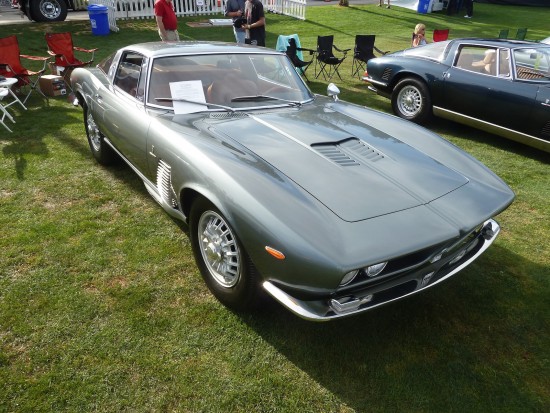
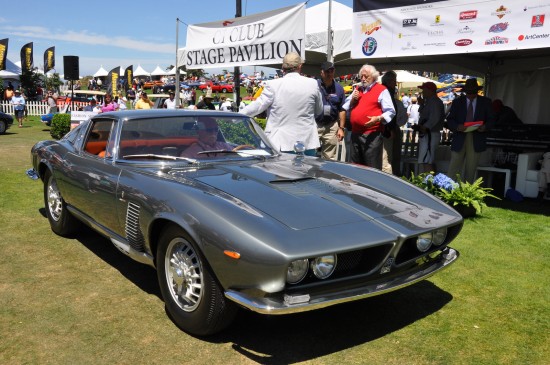
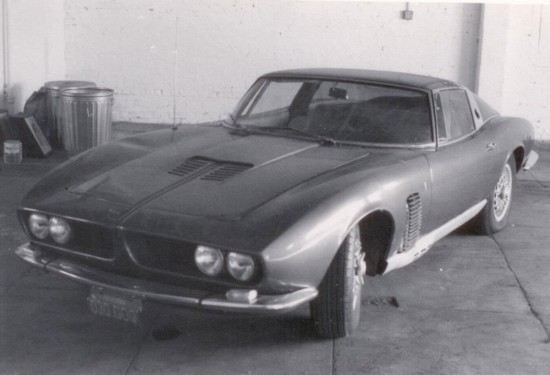
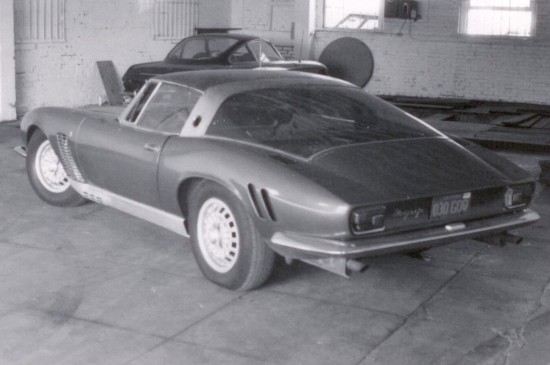

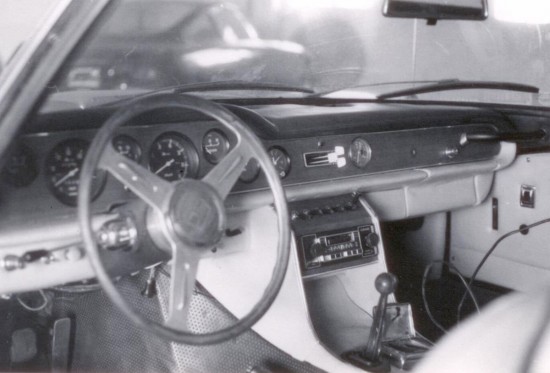
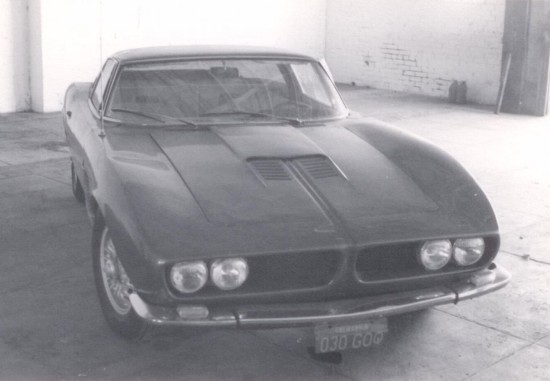
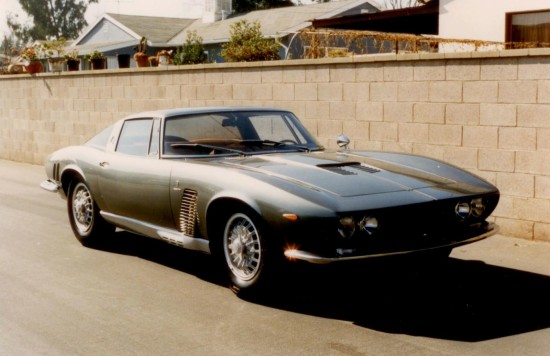
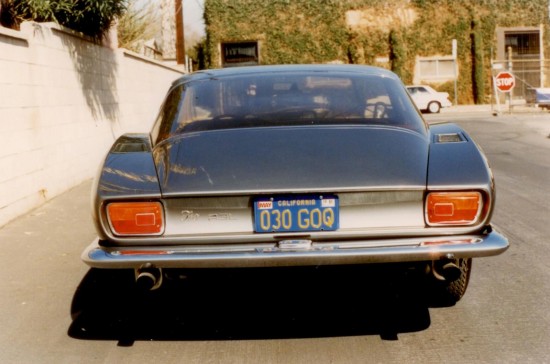
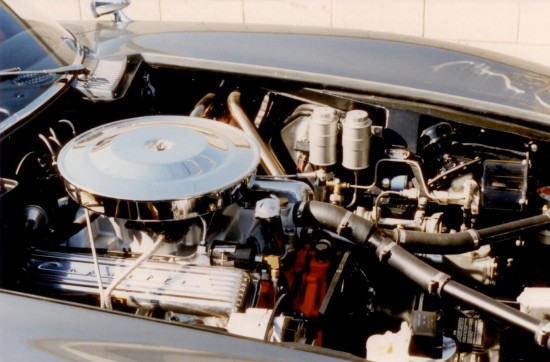
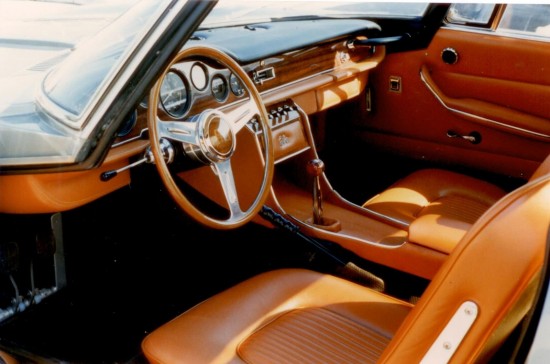
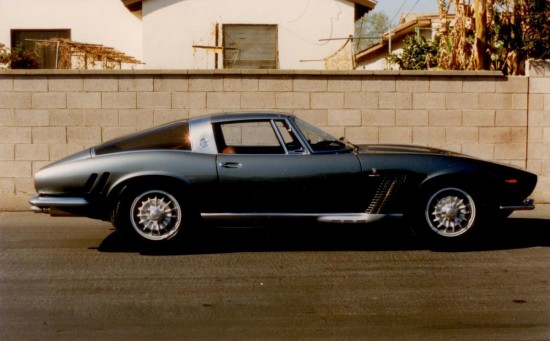
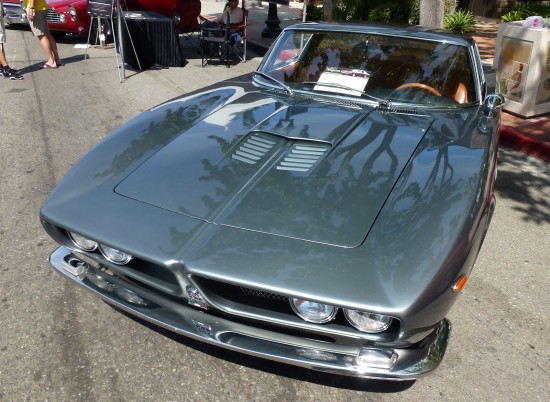
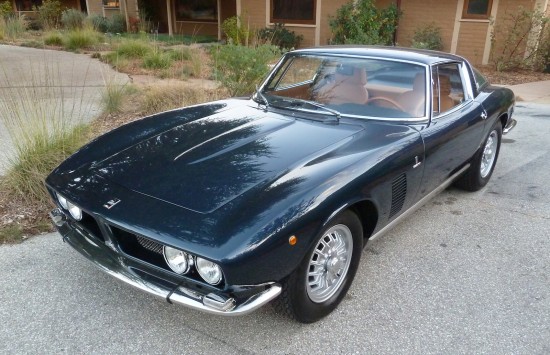
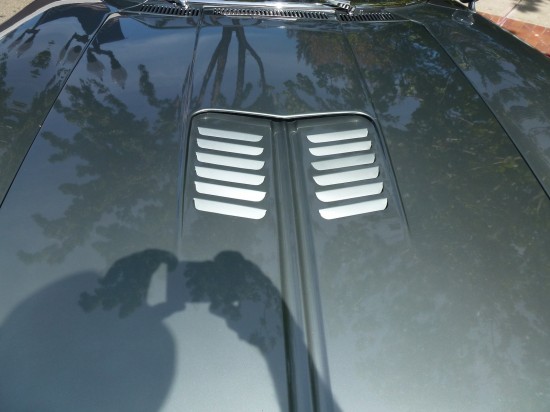
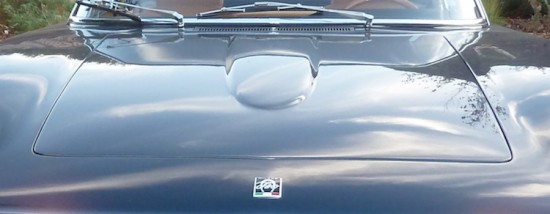
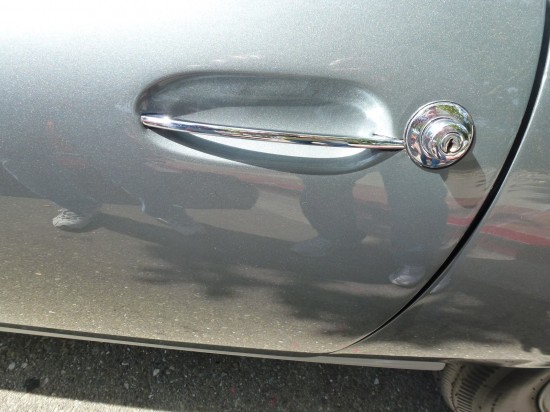
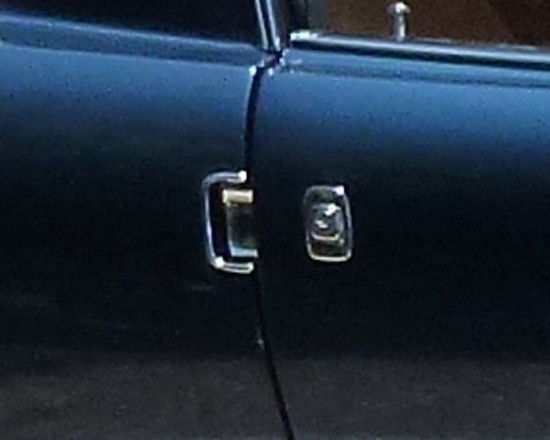
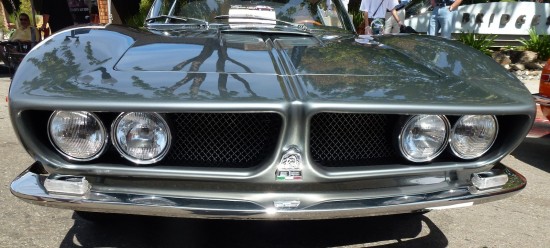
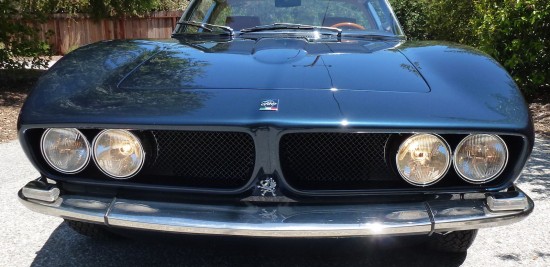
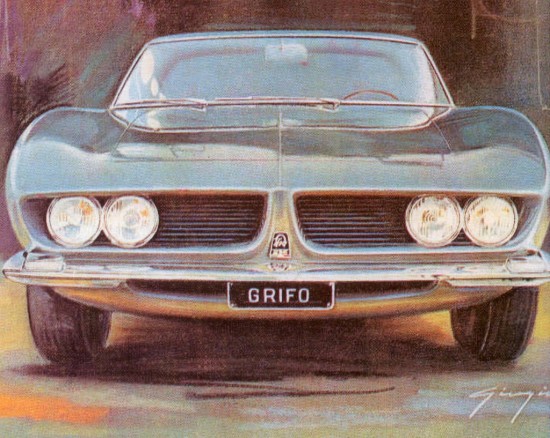
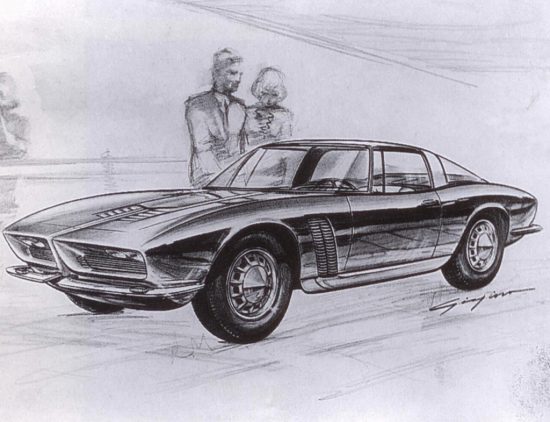




This car came past my shop in the Woodlands Texas about 30 years ago on a trailer, it was stunning then… I had just purchased a Ferrari from the gentleman selling the car, and while tempted to buy this one as well was just out of my budget so I foolishly passed… lovely car… coulda shoulda woulda… great to see it again…
Mike -thank you for reposting all of this Grifo info. I didn’t realize the prototype had more of a shark nose. I love the scoop. Great pictures.
Thank you Bruce, most of the new photos are mine. I am very happy that I found that Ron Kellogg folder and he allowed me to scan those old photos and share them with the world.
Mike, thanks again for featuring this truly unique car and mentioning me in your article. I was always pleased to mention my brief but memorable personal experience with it on my docent tours at Blackhawk where it was on display for several years. We would love to have it back and extoll its beauty once again.
Loved seeing and referencing this car at Blackhawk during docent training. This is a car I frequently reference the car in design classes and just recently wrote an article about it for the Feb 2018 issue of Vintage Roadcar Journal.
I suspect this car is going to top the estimate range, but whatever it sells for, it will certainly impact values of the production cars.
WOW! Looks like this is the crème de la crème of Grifo’s.. I’m sure some deep pocketed collector would love to have this in his collection.